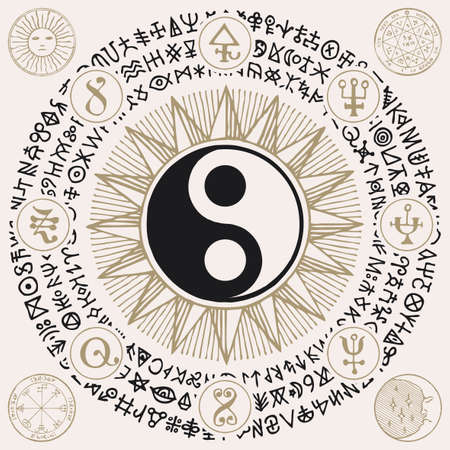Introduction to Zodiac Signs in Indian Astrology
India, a land rich in spiritual heritage, has nurtured astrology for millennia. Vedic astrology, or Jyotish Shastra, traces its origins back to the ancient Vedas and Upanishads, where the movement of celestial bodies was meticulously observed and interpreted. The twelve zodiac signs, known locally as Rashis, play a crucial role in this time-honoured tradition. Each Rashi is ruled by a planet (Graha) and is associated with unique traits, energies, and destinies. In Indian households, from bustling Mumbai to serene Kerala villages, people consult their horoscopes before making major life decisions—be it marriage, business ventures, or even selecting auspicious dates for ceremonies. More than mere superstition, zodiac signs are deeply woven into the spiritual fabric of India. They guide us towards self-awareness and help us align our actions with cosmic rhythms. Understanding your Rashi’s lucky and unlucky items can be seen as a way to harmonise your energy with the universe, invoking blessings and warding off negativity on your journey through life.
2. Understanding Indian Zodiac Signs and Their Traits
Indian astrology, known as Jyotish Shastra, divides the zodiac into twelve Rashis, each with its own rich cultural symbolism and ancient wisdom. Unlike Western sun signs, Indian Rashis are based on the moon’s position at birth. Let us explore each Rashi, their Hindi/Sanskrit names, core attributes, and what makes them uniquely significant in Bharatiya tradition.
| Rashi (Hindi/Sanskrit Name) | English Name | Key Characteristics | Cultural Highlights |
|---|---|---|---|
| मेष (Mesha) | Aries | Bold, energetic, pioneering spirit | Represents the start of the zodiac; associated with leadership and new beginnings |
| वृषभ (Vrishabha) | Taurus | Steadfast, reliable, sensual | Symbolizes prosperity and stability; strong connection to Mother Earth |
| मिथुन (Mithuna) | Gemini | Adaptable, communicative, curious | Loves learning and travel; revered for wit and duality in Vedic tales |
| कर्क (Karka) | Cancer | Nurturing, emotional, intuitive | Deeply connected to family and home; associated with maternal energies in Indian households |
| सिंह (Simha) | Leo | Proud, generous, confident | The lion is a royal symbol; Simha natives are seen as protectors and leaders in society |
| कन्या (Kanya) | Virgo | Analytical, practical, modest | Kanya represents purity and service; often linked to healers or teachers in Indian culture |
| तुला (Tula) | Libra | Balanced, diplomatic, fair-minded | Tula stands for justice; people value harmony and aesthetics in daily life decisions |
| वृश्चिक (Vrishchika) | Scorpio | Mysterious, intense, passionate | Sacred to many tantric traditions; Vrishchika signifies transformation and depth of emotion |
| धनु (Dhanu) | Sagittarius | Adventurous, philosophical, optimistic | Dhanush is the bow of Lord Rama; spiritual seekers with a love for dharma and discovery |
| मकर (Makara) | Capricorn | Disciplined, ambitious, patient | The Makara is part-crocodile/part-fish; symbolizing endurance and persistence in Indian mythos |
| कुंभ (Kumbha) | Aquarius | Innovative, humanitarian, independent thinker | Kumbha connects to the Kumbh Mela festival; signifies collective progress and spiritual awakening |
| मीन (Meena) | Pisces | Sensitive, empathetic, artistic soul | The twin fish symbolize unity in diversity; Meena natives are often drawn to mystical arts and charity work in Indian tradition |
The traditional Rashi chart forms the backbone of Indian astrological practice. Each sign not only shapes a person’s personality but also weaves them into India’s broader spiritual tapestry—where every trait is honored as a cosmic blessing or lesson. The uniqueness of each Rashi reflects the diversity found across Bharat’s landscapes and festivals.

3. Lucky Items for Every Zodiac Sign
In Indian astrology, each zodiac sign (Rashi) is blessed with unique energies and vibrations. By aligning with lucky items such as gemstones (Ratnas), auspicious colours, and sacred symbols, you invite prosperity, health, and positive vibrations into your life. Let’s decode the most recommended lucky items for all 12 zodiac signs, as per Indian tradition.
Aries (Mesha)
Gemstone:
Red Coral (Moonga) empowers Aries natives with courage and vitality.
Colour:
Fiery Red enhances confidence and motivation.
Symbol:
The Ram or a triangle shape brings dynamic energy.
Taurus (Vrishabha)
Gemstone:
Diamond (Heera) brings luxury and stability.
Colour:
White or pastel shades foster peace and abundance.
Symbol:
The Sacred Bull or lotus flower symbolises growth and fertility.
Gemini (Mithun)
Gemstone:
Emerald (Panna) supports communication and intellect.
Colour:
Green promotes harmony and mental clarity.
Symbol:
The Twins or peacock feather encourages creativity.
Cancer (Karka)
Gemstone:
Pearl (Moti) nurtures emotional balance and intuition.
Colour:
Cream or silver shades increase serenity.
Symbol:
The Crab or water pot invokes protection and healing energy.
Leo (Simha)
Gemstone:
Ruby (Manikya) boosts leadership qualities and self-esteem.
Colour:
Royal gold or orange radiates power and success.
Symbol:
The Lion or sun motif channels authority and strength.
Virgo (Kanya)
Gemstone:
Panna (Emerald) sharpens analytical skills and practicality.
Colour:
Sage green or light yellow aids focus and well-being.
Symbol:
The Maiden or sheaf of wheat inspires purity and diligence.
Libra (Tula)
Gemstone:
Opal or Diamond fosters harmony in relationships.
Colour:
Pale blue or white enhances balance.
Symbol:
The Scales symbolise justice, fairness, and equilibrium.
Scorpio (Vrischika)
Gemstone:
Red Coral increases determination and resilience.
Colour:
Burgundy or deep red intensifies passion and transformation.
Symbol:
The Scorpion or trident signifies power over adversity.
Sagittarius (Dhanu)
Gemstone:
Yellow Sapphire (Pukhraj) attracts wisdom and fortune.
Colour:
Purple or yellow sparks optimism and spiritual growth.
Symbol:
The Archer’s bow inspires adventure and higher learning.
Capricorn (Makara)
Gemstone:
Blue Sapphire (Neelam) provides discipline and success in career matters.
Colour:
Navy blue or grey grounds ambition into reality.
Symbol:
The Crocodile or mountain signifies endurance and achievement.
Aquarius (Kumbha)
Gemstone:
Sapphire strengthens clarity of thought and social connections.
Colour:
Aqua blue stimulates innovation and openness.
Symbol:
The Water Bearer vessel symbolises humanitarian spirit and new ideas.
Pisces (Meena)
Gemstone:
Aquamarine fosters compassion, intuition, and serenity for Pisceans.
Colour:
Mauve or sea green soothes emotions and supports imagination.
Auspicious Note
Selecting these lucky items as per your Rashi can help unlock the full blessings of your sign. Indian astrologers recommend wearing gemstones only after proper consultation to avoid unintended effects. Surround yourself with auspicious colours, symbols, or objects daily to harmonise your energies with the cosmos—inviting Lakshmi’s grace for prosperity, health, and happiness on your journey through life’s mandala.
4. Unlucky or Inauspicious Items to Avoid
In Indian astrology, the concept of inauspicious or unlucky items, colours, and practices is deeply rooted in Vedic wisdom and regional customs. Each Rashi (zodiac sign) is believed to have specific elements that can disrupt harmony or attract negativity. Understanding these can help individuals align with positive energies and avoid pitfalls on their spiritual and material journeys.
Common Beliefs Across Rashis
The ancient texts and regional folklore often mention particular items, colours, or rituals that may be unfavourable for certain zodiac signs. These beliefs are not just superstition but are interwoven with astrological calculations and planetary positions. Below is a table summarising some widely accepted associations:
| Rashi (Zodiac Sign) | Unlucky Colours | Inauspicious Items/Practices | Regional Custom/Belief |
|---|---|---|---|
| Mesha (Aries) | Black | Wearing iron ornaments | South Indian traditions avoid black for Mars-ruled natives |
| Vrishabha (Taurus) | Red | Lending money on Fridays | Bengali households avoid red attire during Venus periods |
| Mithuna (Gemini) | Dark green | Using leather products excessively | Maharashtrian custom to refrain from green gifts during Mercury Dasha |
| Karka (Cancer) | Brown | Broken glass at home | Punjabi belief that cracked utensils bring Moon-related troubles |
| Simha (Leo) | Blue | Sitting under Peepal tree after sunset | Rajput families avoid blue for Sun-ruled occasions |
| Kanya (Virgo) | Red & Black combo | Crow feathers at home | Tamil Nadu avoids mixing red & black for Mercury-ruled days |
| Tula (Libra) | Yellow ochre | Lending salt on Saturdays | Gujarati tradition discourages yellow for Venus-ruled natives on Shaniwar (Saturday) |
| Vrischika (Scorpio) | Pale grey | Sweeping house after sunset | Keralite belief links this to Mars disturbances in horoscope |
| Dhanus (Sagittarius) | Cream/Beige | Sitting cross-legged during Guru Puja | Northern India avoids beige for Jupiter-ruled events |
| Makara (Capricorn) | Purple | Cutting nails after dark | Bihar tradition sees purple as unlucky for Saturn periods |
| Kumbha (Aquarius) | Pink | Donating oil on Sundays | Kannadiga belief against pink for Saturn/Moon natives |
| Meena (Pisces) | Bottle green | Crying near water bodies at dusk | Bengal custom links this to Jupiters ill effects |
The Power of Avoidance in Daily Life
Avoiding these items or actions is not about fear but about harmonising with cosmic rhythms. Many families follow these practices during festivals, important life events, or challenging planetary periods called Dasha or Antardasha. Regional variations add beautiful diversity to these beliefs, making Indian astrology a living tradition guided by both universal Vedic principles and local wisdom.
Tips from Vedic Wisdom:
- If unsure about an item’s auspiciousness, consult your family astrologer or elders who know your Rashi.
- Cleansing rituals—like lighting a diya or sprinkling Ganga Jal—can neutralise minor inauspicious influences.
Nurture Positive Energy:
The ultimate goal is to nurture positive vibrations and maintain balance. By being mindful of what is considered inauspicious according to your Rashi and region, you invite abundance and protection on your unique journey through the stars.
5. Regional Variations in Astrological Beliefs
Indias tapestry of cultures weaves together a fascinating array of astrological traditions, each region bringing its own flavour to the interpretation of zodiac signs and their associated lucky or unlucky items. While the twelve zodiac signs—known as Rashi in Indian astrology—remain consistent throughout the country, the significance of items believed to bring fortune or misfortune can vary widely depending on local customs, language, and spiritual beliefs.
South Indian Perspectives
In South India, especially in states like Tamil Nadu and Kerala, there is a strong reliance on ancient Dravidian astrology and rituals. Here, auspicious items for each Rashi are often tied closely to temple traditions and local deities. For example, wearing rudraksha beads is considered highly favourable for those with the Vrishabha (Taurus) sign, while certain flowers such as jasmine are recommended for Meena (Pisces). Unlucky items might include specific types of black beads or metal during planetary malefic periods (Dasha), as interpreted by family astrologers.
Bengali Beliefs
The Bengali community places immense importance on gemstones and metals tailored to individual horoscopes. For instance, Bengalis born under Mithun (Gemini) are often advised to wear emeralds set in gold for intellectual clarity and protection from ill luck. Conversely, they may avoid pearls if the moon is weak in their chart—a regional belief not always shared elsewhere in India. Rituals around Durga Puja also influence what is considered auspicious or taboo for certain zodiac signs during festive seasons.
Punjabi Views
Punjab’s astrological interpretations blend Vedic wisdom with Sikh spiritual practices. Punjabis frequently consult Janam Kundali (birth charts) before making decisions about lucky objects. Those with Simha (Leo) as their Rashi might be advised to carry silver coins engraved with religious symbols, while unlucky items could include copper utensils during specific transit periods. The use of red threads tied around the wrist—a common Punjabi custom—is seen as both protective and lucky for multiple zodiac signs.
The Unity in Diversity
Despite these rich regional distinctions, a common thread runs through Indian astrology: the belief that aligning one’s life with cosmic energies brings harmony and prosperity. Whether you’re consulting a Tamil priest about flower offerings, a Bengali jeweller about gemstones, or a Punjabi elder about sacred threads, remember that each tradition reflects a unique decoding of universal energies into everyday life. Embrace these differences—they are the soul of India’s astrological wisdom.
Popular Rituals and Remedies for Enhancing Luck
Accessible Indian Remedies for Every Zodiac Sign
Indian astrology offers a treasure trove of practical remedies designed to attract positivity, neutralise negative influences (doshas), and strengthen your astrological stars. These rituals are deeply woven into the cultural fabric of Bharat and have been passed down through generations. Here are some accessible and effective methods recommended by astrologers across India:
Puja: Sacred Offerings to Please the Planets
Pujas are special prayer ceremonies performed to seek blessings from specific deities or planets that govern your zodiac sign. For example, Mangal Dosh remedies often include Hanuman puja on Tuesdays, while Shani puja on Saturdays helps pacify Saturn’s influence. Lighting diyas, offering flowers, and reciting prescribed prayers during these ceremonies can amplify your good fortune.
Yantra: Harnessing Cosmic Geometry
Yantras are mystical diagrams etched on copper plates or drawn with sandalwood paste, each resonating with the energy of a particular planet or deity. Placing a yantra—like Shri Yantra for prosperity or Navagraha Yantra for planetary harmony—in your pooja room or workplace is believed to attract abundance and dispel obstacles related to your zodiac chart.
Mantra Chanting: Vibrational Healing for the Soul
Each rashi (zodiac sign) has powerful mantras associated with its ruling planet. Chanting “Om Namah Shivaya” strengthens those born under Mesha (Aries), while “Om Namo Narayanaya” brings balance to Dhanu (Sagittarius). Regular recitation of these sacred sounds, especially during auspicious muhurats, can elevate your aura and protect you from negative energies.
Other Simple Yet Powerful Remedies
- Wearing Gemstones: Based on your lagna (ascendant) and planetary positions, gemstones like blue sapphire for Kumbha (Aquarius) or pearl for Karka (Cancer) may be recommended. Always consult a trusted astrologer before adorning any gemstone.
- Charity and Seva: Donating food, clothes, or money to the needy on your planetary day (e.g., Wednesdays for Mercury) is said to reduce malefic effects and invite blessings.
- Fasting (Vrat): Observing fasts on specific days linked to your zodiac can help cleanse karmic debts and strengthen your destiny path.
By integrating these time-honoured Indian rituals into daily life, individuals can align with their cosmic blueprint, dissolve negativity, and unlock the full potential promised by their stars. Remember—the power lies in sincere intention and consistent practice.
7. Conclusion: Embracing Astrology Mindfully
In the vibrant tapestry of Indian culture, astrology holds a cherished place—guiding choices, shaping beliefs, and linking us to generations past. As we have explored the lucky and unlucky items for each zodiac sign through the lens of Indian astrology, it is essential to remember that these recommendations are not strict rules but gentle suggestions rooted in tradition. Honouring these age-old customs can add meaning and positivity to our lives, serving as daily reminders of our connection to the cosmos and the wisdom of our ancestors.
Yet, true empowerment comes from making informed decisions with both heart and mind. Whether you choose to wear a lucky gemstone, avoid a particular colour, or keep a sacred symbol close, let your choices be guided by self-awareness and intention. Indian astrology offers a spiritual compass, but ultimately, you hold the power to create your own destiny. Embrace the beauty of these traditions while also listening to your inner voice—balancing reverence for heritage with mindful living. In this way, you honour both the ancient roots and the evolving branches of your journey under the stars.

